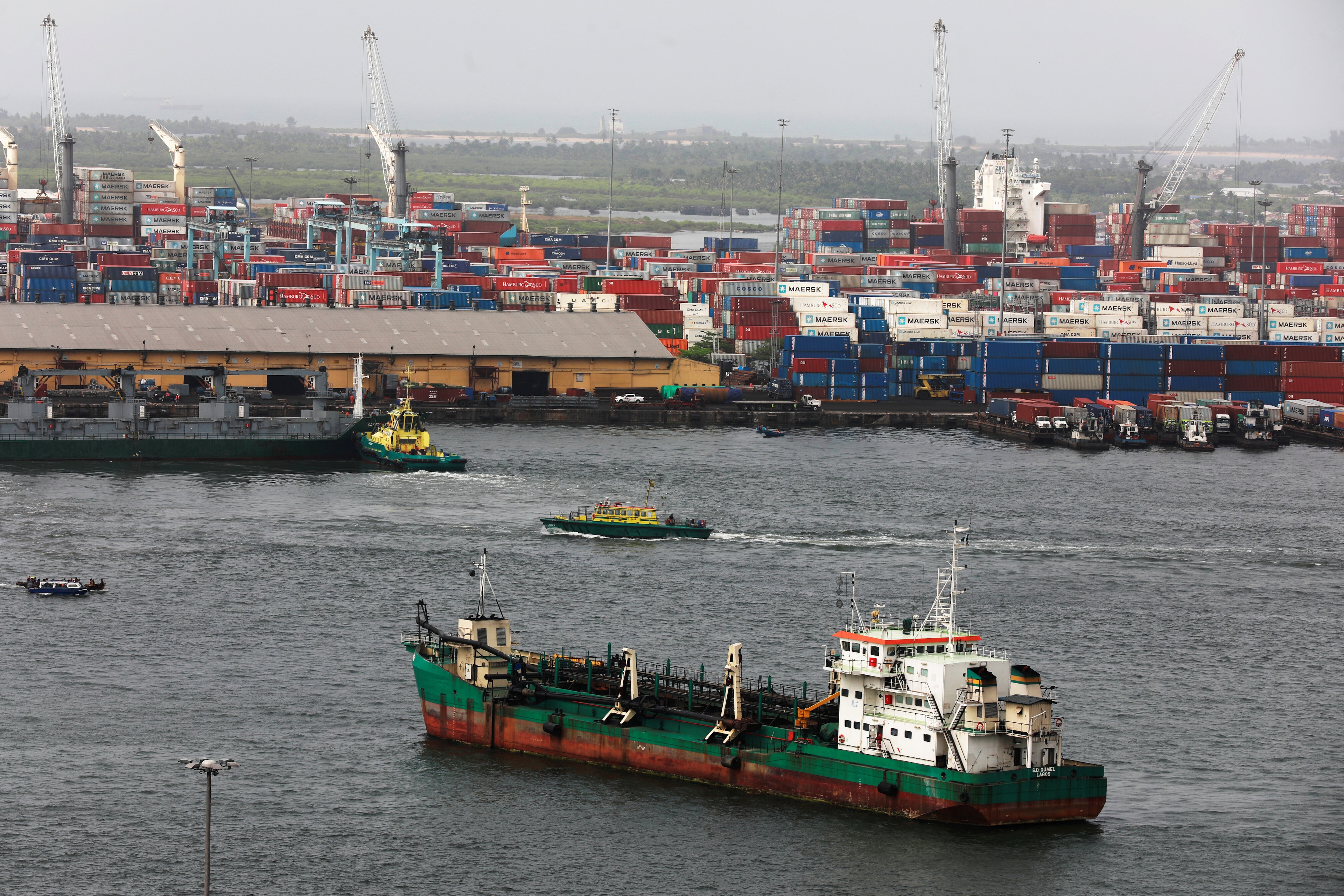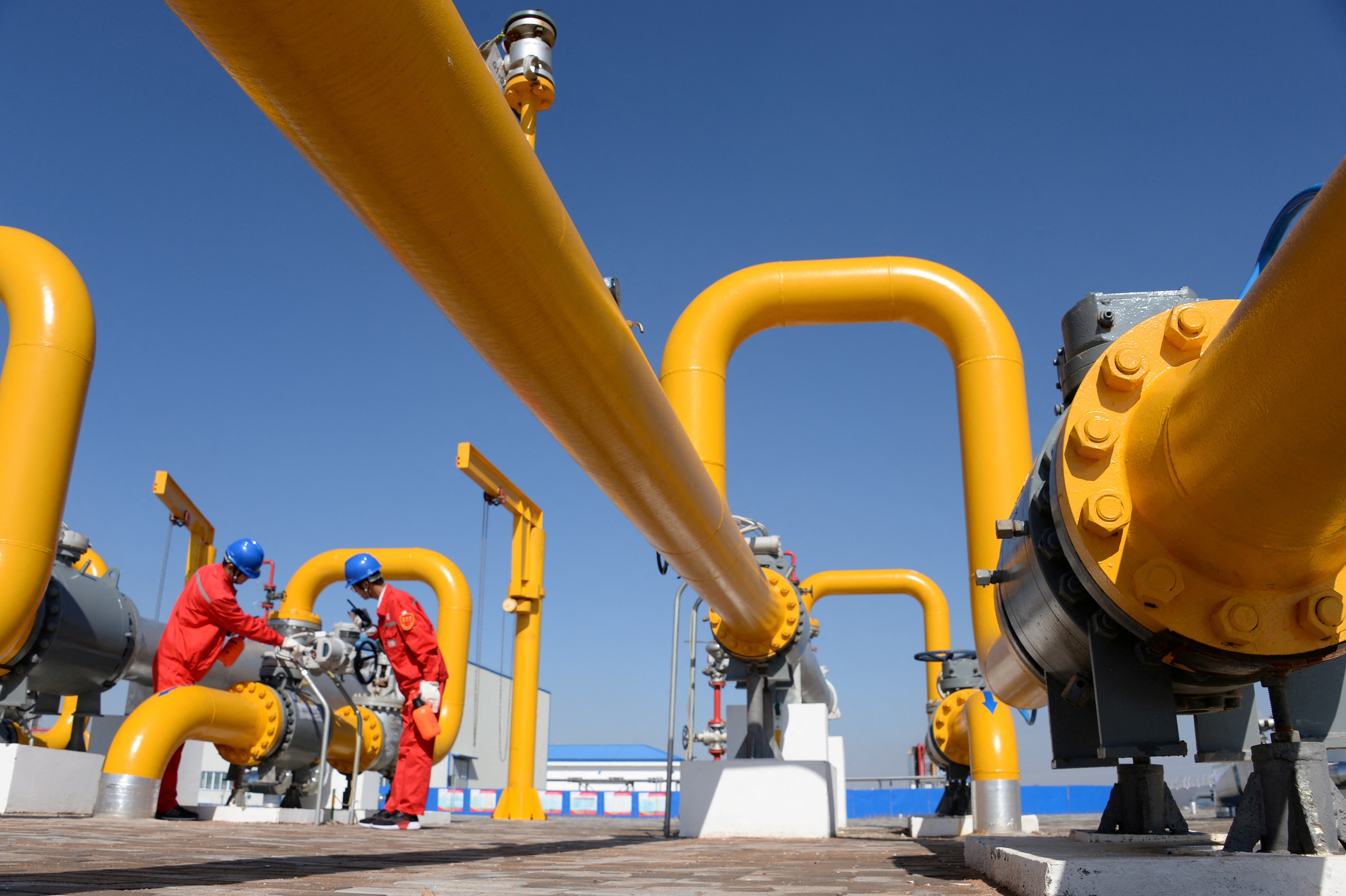China's solar power capacity set for record growth. Here's what you need to know about the global energy transition this week

Top energy news: Oil and gas industry profits jump to $4 trillion; China's solar capacity set for record growth; Sri Lanka and India look to link power grids.
Image: REUTERS/Johanna Geron//File Photo
Roberto Bocca
Head, Centre for Energy and Materials; Member of the Executive Committee, World Economic ForumStay up to date:
Energy Transition
Listen to the article
- This weekly round-up brings you the latest developments in the global energy sector.
- Top energy news: Oil and gas industry profits jump to $4 trillion; China's solar capacity set for record growth; Sri Lanka and India look to link power grids.
- For more on the World Economic Forum’s work in the energy space, visit the Shaping the Future of Energy, Materials and Infrastructure Platform.
1. News in brief: Energy stories from around the world
The global oil and gas industry's profits in 2022 jumped to $4 trillion from an average of $1.5 trillion in recent years, according to the head of the International Energy Agency (IEA). However, Fatih Birol says countries depending on oil and gas revenue should prepare to diversify their economies as demand is going to fall in the longer term.
The biggest obstacles to rapidly building out renewable energy in Europe are the capacity of the supply chain and an uncertain investment environment, according to the head of Germany's biggest utility RWE. The war in Ukraine and the ensuing energy crisis have been a wake-up call for Europe, highlighting years of under-investment in energy infrastructure, Markus Krebber said.
India will exclude renewable power companies from government contracts for up to five years if they do not meet project completion deadlines, as the country looks to speed up green power projects. India needs to install more than 40 gigawatts (GW) of capacity each year to achieve its commitment to increase its non-fossil fuel capacity to 500GW by 2030.
Pakistan plans to quadruple its domestic coal-fired capacity to reduce power generation costs and will not build new gas-fired plants in the coming years. A shortage of natural gas, which accounts for over a third of the country's power output, has caused widespread blackouts.
The US has issued long-awaited rules on its national electric vehicle charger network. The rules require chargers to be built in the US immediately, with 55% of their cost coming from US-made components by 2024.
Sri Lanka and India will sign a pact to link their power grids and start negotiations on an upgraded trade agreement within two months, according to government sources. A key part of Sri Lanka's economic recovery plan involves developing its renewable energy resources in the north, from where power can be transported into southern India through a transmission cable.
Barclays says it is tightening lending criteria for coal power and will stop financing oil sands exploration and production. However, the UK bank did not announce new restrictions on oil and gas lending as some rivals have done.
South African farmers are looking to renewable power sources such as small-scale solar to help keep their businesses running, reports ABC News. Farmers and food processors have been facing daily electricity blackouts due to a national grid crisis.
BP says it is looking to hire more than 100 new employees to its offshore wind division as the energy company rapidly expands its operations in the sector around the world. The British energy giant has recently formed joint ventures in Britain, Germany, Japan and the US to develop large offshore wind projects.
A German project aimed at boosting clean energy for home heating expects to hit a key milestone of 30% "green" hydrogen blended with natural gas heating in some households within weeks. The project by Netze is the first of its kind in Germany and the firm hopes it could serve as a blueprint for the rest of the country.
2. China's solar power capacity set for record growth
China is expected to bring online 95-120GW of solar power in 2023, adding as much as 30% to its current total, according to the China Photovoltaic Industry Association (CPIA). This would represent a record annual rise in capacity.
China is already the world's biggest solar products maker and generator. It brought 87.41GW of new solar power into operation in 2022, official data shows. This drove total installed capacity to 392.61GW.
While the country's solar capacity is growing rapidly, its solar products exporters are facing more trade disputes and tougher competition offshore in destinations such as the US, the EU and India. "Trade barriers are bringing increasing difficulties for Chinese solar firms seeking to expand in overseas markets, and the rapid development of local manufacturers in those countries will hit China's solar manufacturing industry," says CPIA Honorary Chairman Wang Bohua.
The CPIA says the development of solar power stations in China continues to face several problems despite a slight decrease in investment costs. The obstacles include a mandatory requirement from some local governments to install energy storage alongside solar farms, and government restrictions on land and water usage amid Beijing's growing efforts to protect farmland.
3. EU publishes rules on nuclear-derived hydrogen
The European Commission has published rules that could allow some hydrogen produced in nuclear-based energy systems to count towards renewable energy goals. Hydrogen is a central pillar of the EU's plans to decarbonize heavy industry. The rules aim to incentivize investors and industries to shift from hydrogen produced from fossil fuels, to that produced using renewable electricity instead.
The question as to what is "renewable" has prompted disagreement between France and countries such as Germany, which says nuclear-based fuels shouldn't be included. The row has already delayed negotiations on the EU's new renewable energy targets.
Brussels has now set out types of hydrogen that will count towards the renewable targets. These include hydrogen from production facilities directly connected to a new renewable electricity generator, and those that take grid power if the local electricity zone had more than an average 90% share of renewable power in the last year.
Facilities can also take grid power in regions that meet a low CO2 emissions limit – potentially based on nuclear – as long as the producer also signs a long-term power purchase agreement with a renewable electricity provider in their region.
4. More on energy from Agenda
Africa will have the second-largest growth in gas supply by 2050, new figures show. The challenge now is how to ensure a secure, affordable and sustainable energy system for Africa, experts say.
The EU expects renewables to comprise 45% of its energy mix by 2030. However, the International Energy Agency says the target won’t be met unless governments and industry ramp up the energy transition.
There are four key environment and development issues to watch out for in 2023, says World Resources Institute President Ani Dasgupta. Top of the list is how the energy crisis will impact the transition to clean energy.
To learn more about the work of the Energy, Materials, Infrastructure Platform, contact Ella Yutong Lin: ellayutong.lin@weforum.org
Accept our marketing cookies to access this content.
These cookies are currently disabled in your browser.
Don't miss any update on this topic
Create a free account and access your personalized content collection with our latest publications and analyses.
License and Republishing
World Economic Forum articles may be republished in accordance with the Creative Commons Attribution-NonCommercial-NoDerivatives 4.0 International Public License, and in accordance with our Terms of Use.
The views expressed in this article are those of the author alone and not the World Economic Forum.
Forum Stories newsletter
Bringing you weekly curated insights and analysis on the global issues that matter.
More on Energy TransitionSee all
Keith Svendsen
September 18, 2025
Stephanie Jamison
September 18, 2025
Roberto Bocca
September 17, 2025
Jennifer Schenker
September 16, 2025
Eneida Licaj and Genevieve Sherman
September 10, 2025
Thomas Kiessling
September 10, 2025






